The 10 Best European Summer Vacations Without Crowds
Don’t get us wrong, we love Europe’s greatest hits. There’s a reason cities like Paris, Rome, and Barcelona reel in the tourist masses every year—especially during the warmer months when visitation hits capacity. But if you’ve already collected your passport stamps, shelled out for London hotels and high tea, and want to experience something a bit more off the beaten (and exorbitant) path, now's the time to dodge the usual throngs in Europe and opt for alternative hideaways that are equally spectacular and often more affordable.
From emerging foodie hubs and undercover art capitals to off-the-radar natural wonders, our nominees for the best overlooked places to visit in Europe this summer are in. These top 10 towns to escape the coming crowds should be in play for your next unforgettable European vacation.
Helsinki, Finland
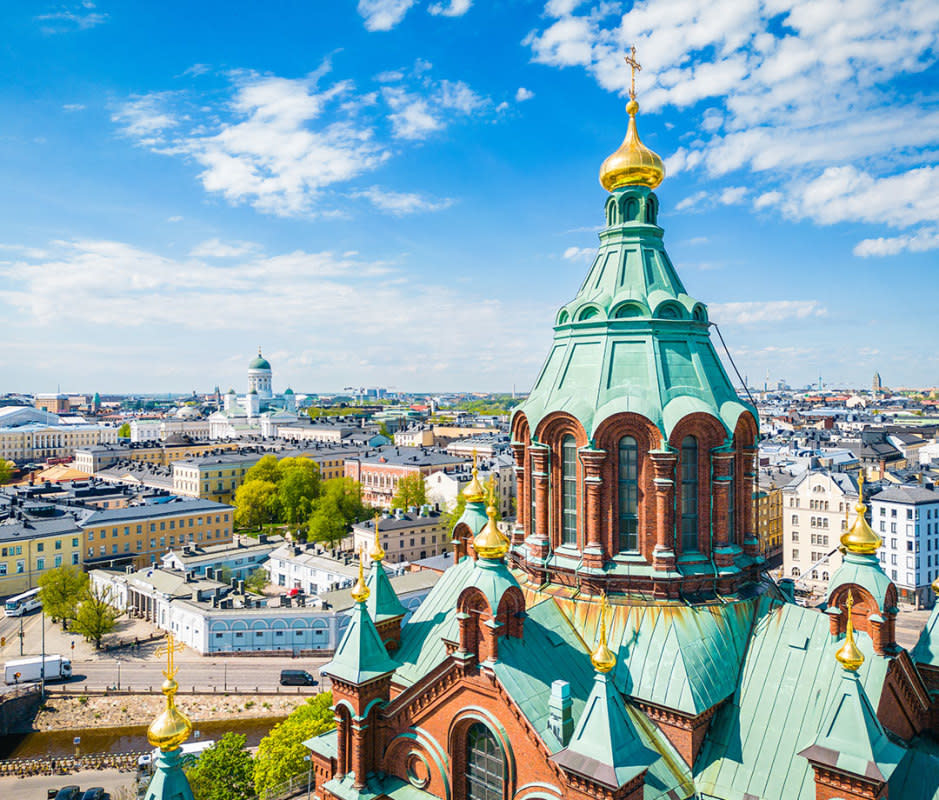
Miemo-Penttinen/Getty Images
Helsinki, Finland, perfects integrating nature and city life, making it the perfect “why not both?” location. Sauna is practically a national sport (and the only Finnish word to slip into the English language), so get your swim and steam on at local favorites like Allas Sea Pool and Löyly. If you’re feeling really wild, you can even book a sauna car at SkyWheel Helsinki. Then grab a rental bike to visit the rest of the city’s standout architectural sites—including Senate Square, Temppeliaukio Church, and Oodi Library. Or take a quick ferry out to the offshore islands of Suomenlinna, Lonna, and Vallisaari for a day of isle-hopping, urban hiking, and paddling. A UNESCO World Heritage Site, Suomenlinna (comprised of five bridge-linked islands) is a fortified landmass lined with hiking trails winding through old fortifications and converted art studios. On neighboring Vallisaari, hit the water in a kayak on a paddling tour for closeups of the archipelago.
Winters are long, so take advantage of the summer months with coffee and buns at seaside cabin Cafe Regatta, cocktails in front of the large windows at Yes Yes Yes, or traditional Nordic eats at the Kappeli greenhouse. For music fans, the optimal time to visit is in August, when Flow Festival (held in an abandoned power plant) attracts headliners like The Smile, Pulp, and Gorillaz. While Scandinavia is known to be relatively expensive by Western European standards, Finland prices tend to be a notch lower than neighbors, Norway and Denmark.
Where to Stay: Lapland Hotels Bulevardi
The Lapland Hotels Bulevardi’s northern Finland vibe is plenty chic, but the main reason to book this centrally located hotel is for the en suite sauna. For the added spa experience, massage stones, face masks, and creams—all from Finnish brands—can be ordered at the front desk.
Related: 2024 Men’s Journal Travel Awards: Best Vacations, Hotels, and Luggage
Bilbao, Spain
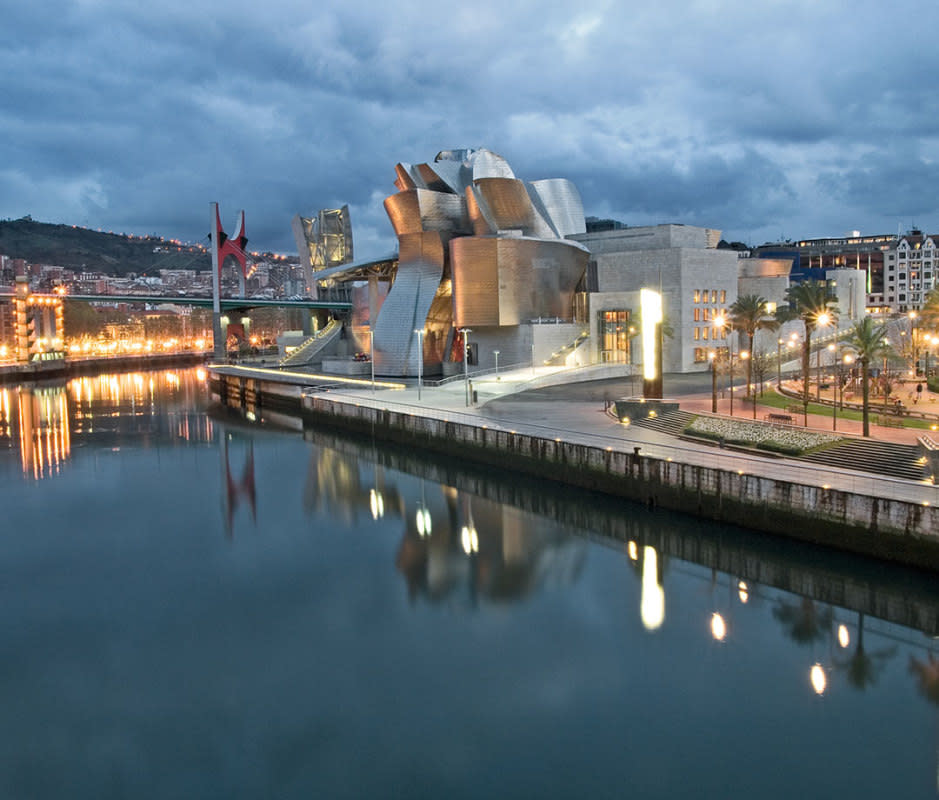
JTPalacio/Getty Images
While Bilbao is technically part of Spain, it’s also proudly Basque, a region with its own language, flag, cuisine, and worthy reasons to explore beyond Madrid and Barcelona. Settle into the relaxed vibe with a wander along River Nervión, where the iconic Guggenheim Museum Bilbao’s free bank-side art includes pieces by Louise Bourgeois, Jeff Koons, and an hourly fog sculpture by Fujiko Nakaya. Or take to the water in the neighboring Basque community of Getxo on a Bay of Biscay Guided Water Bike Tour, pedaling across the bay with dramatic views of the famed Vizcaya Bridge, the world's oldest transporter bridge and one of the great Industrial Revolution-era marvels of engineering. Continue your exploration into Bilbao's old town, where numerous bars showcase their culinary creativity with pintxo—a series of bite-sized snacks featuring local seafood, meat, and produce—all best paired with a glass of local cider. Music fans should plan their visit for early July, when Bilbao BBK attracts international music talent, including previous headliners like Florence and the Machine, Phoenix, and Childish Gambino.
Where to Stay: Hotel Tayko Bilbao
Hotel Tayko Bilbao has preserved the bones of the 1924 building for a stay that’s equal parts boutique and industrial, at a price point that will assure you have plenty of change left for pintxo.
Warsaw, Poland
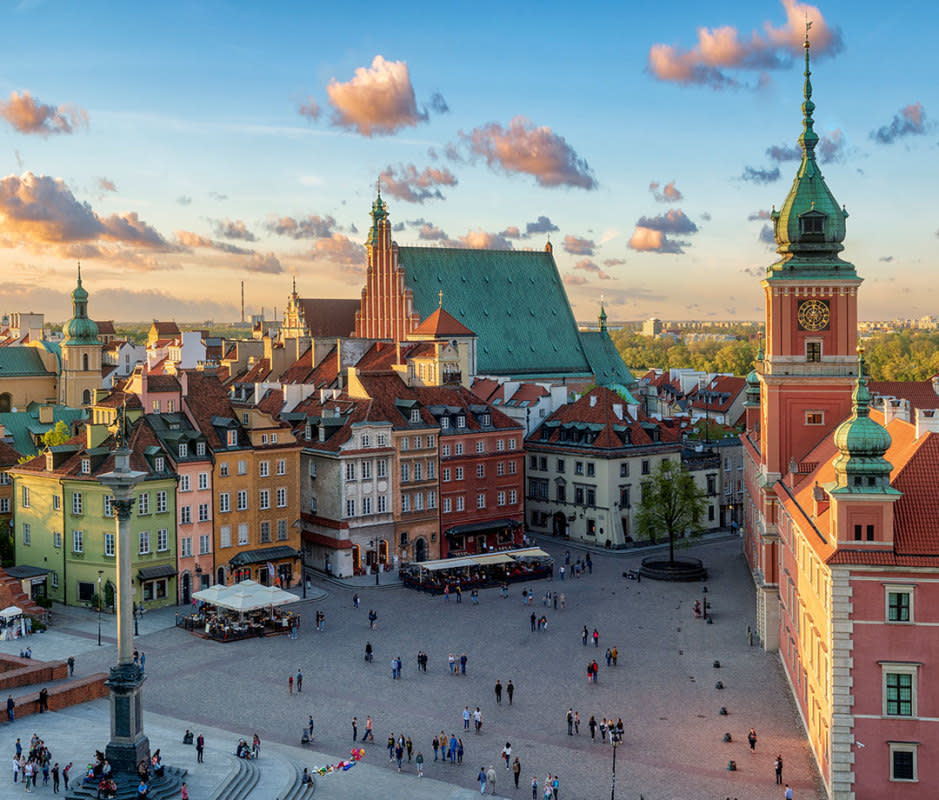
MikeMareen/Getty Images
Poland is overlooked by American tourists, in part due to the antiquated belief that Eastern Europe is behind the times. Buying into this bias misses an opportunity to explore a fascinating, visitor-friendly country that is continuing to forge a new identity. Warsaw, in particular, stands as an artsy alternative to the expat-saturated neighborhoods of Berlin, with almost as many cafes and watering holes—making it the perfect summer location.
Get a birds-eye view of the city’s twisting streets and architectural styles from atop Pałac Kultury i Nauki, a castle-like building, gifted to the city by Stalin, only to be repurposed as a creative and business hub. Sip vodka (doubling as the country’s social glue) at Woda Ognista, which in addition to serving the drink straight-up offers playful twists on American classic cocktails. Explore the country’s communist past through one of the more unexpected art forms at Neon Muzeum, located in the Soho Factory creative complex. On a mild summer evening, end your days with a stroll along the Vistula River, beginning at BarKa, one of the city’s major nightlife and concert hubs. That massive, glowing, basket-like structure is Stadion Narodowy, the largest football stadium in the country. Attending a match here is a cultural experience like no other.
Where to Stay: Hotel Warszawa
Hotel Warszawa was a former tactical target during World War II turned into a symbol of the resistance. These days, the recently refurbished five-star art deco lodging offers a high-end spa and unparalleled views of the city. The hotel hosts a free annual art fair (Sept. 7-8, 2024), showcasing contemporary art in a historic venue that is an attraction unto itself.
Utrecht, Netherlands
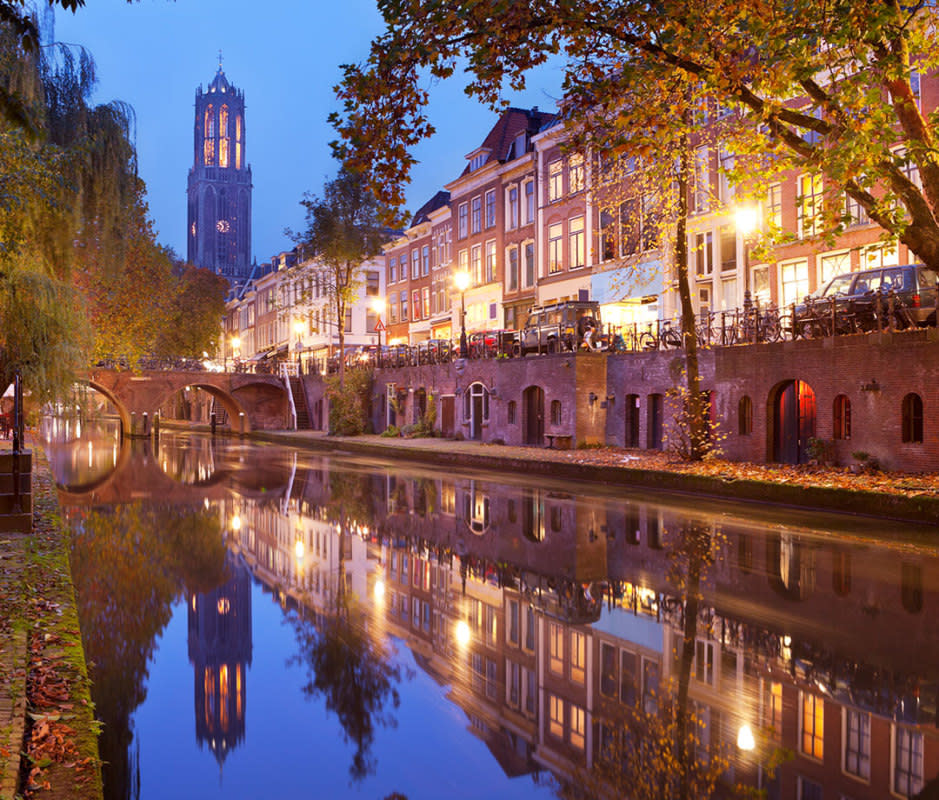
Sara Winter/Getty Images
Less than 30 miles from Amsterdam, Utrecht’s press often gets gobbled up by its more sprawling neighbor—but the Netherlands’ fifth largest city is enchanting on a more manageable scale. Hopping on a bike (the country’s favorite mode of transport) is a great way to explore the city’s twisting streets and charming canals. Get high (figuratively, in this case) by climbing the Dom Tower for a better look at the micro-metropolis's twisting streets. For a midday caffeine break, visit The Village Coffee, a student-friendly, Wi-Fi-equipped oasis serving tall coffees in Illuminati-branded cups. If you’re looking for a coffee shop, in the traditional Dutch sense of the term, they’ve got those, too. Head to Culture Boat for a waterside view while you’re imbibing. For the ultimate cultural experience, return in November when the city hosts Le Guess Who?—a celebration of music and culture from around the world. For a top 10-miler, hikers can trek the Eendenkooienpad (Duck Decoy Trail), which winds along the scenic river Hollandse IJssel and tranquil low-lying countryside.
Where to Stay: Mother Goose
Housed in a former castle overlooking Ganzenmarkt Square in the historic heart of Utrecht, Mother Goose has led its share of past lives in what is now a tastefully restored, four-story boutique hotel furnished with uniquely designed guest rooms leaning minimalist-chic. Priding itself on sustainability, the hotel offers gorgeous views of the city and proximity to several cafes and shops just steps away.
Related: Adventure Seekers Need to Know About These New Hotel Openings
Ljubljana, Slovenia
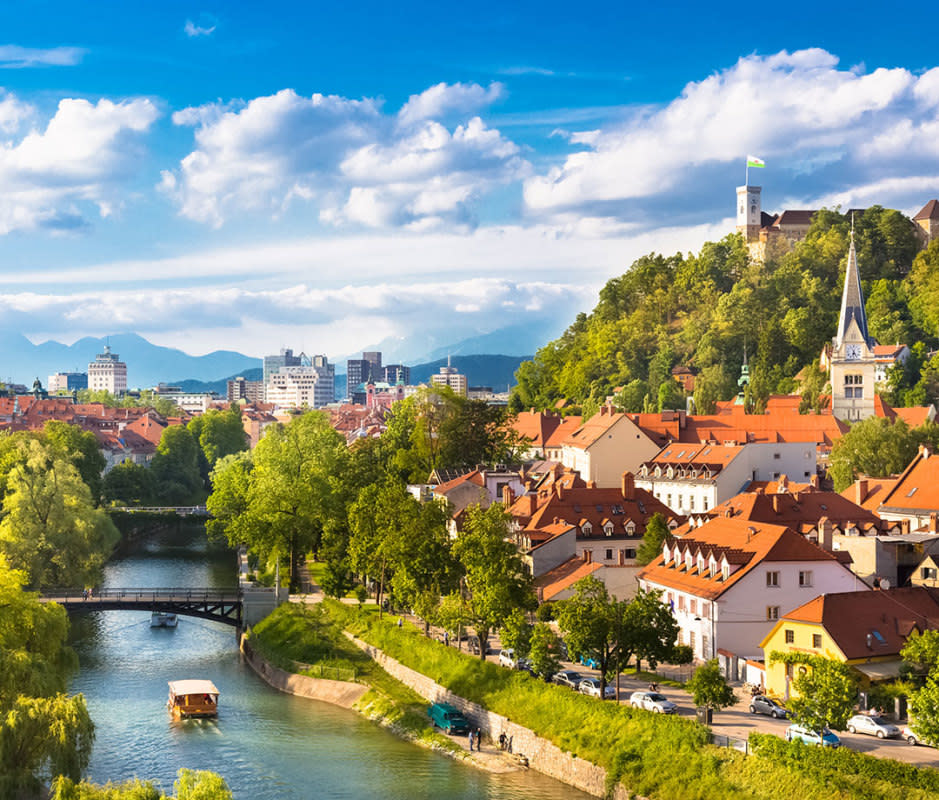
kasto80/Getty Images
Slovenia’s capital city is lush. Featuring an interconnected network of green spaces, bike lanes, and pedestrian zones, you could easily traverse Ljubljana without ever hopping in a car. The real showpiece is Ljubljanica River, winding through the city’s compact old town. Stroll toward Dragon Bridge, an iconic piece of Art Nouveau architecture, then on to the funicular where a couple euros will deliver you to the door of Ljubljana Castle, offering the city's bests views framed by Kamnik Alps. If you’re in a royal state of mind, 12 euros will get you through the door. Reserve a day for a side trip to nearby Lake Bled, where you can take a traditional pletna boat out to Bled Island, home to a church situated on the site of a former temple dedicated to the goddess of life and fertility. Framed by lush mountains, the area is also a hikers’ paradise. A quick 30-mile scenic drive north of the capital leads to the alpine resort of Bled, where a signature hike along the Lake Bled Loop Trail encircles one of the most stunning mountain lakes in the region.
Where to stay: Intercontinental Ljubljana
InterContinental Ljubljana is the city’s first five-star hotel, featuring sleek, modern rooms and panoramic views that are best enjoyed from its full-service spa (perched on the 18th floor) and acclaimed restaurant (two more levels up) run by a chef from a Michelin-starred establishment.
Lausanne, Switzerland
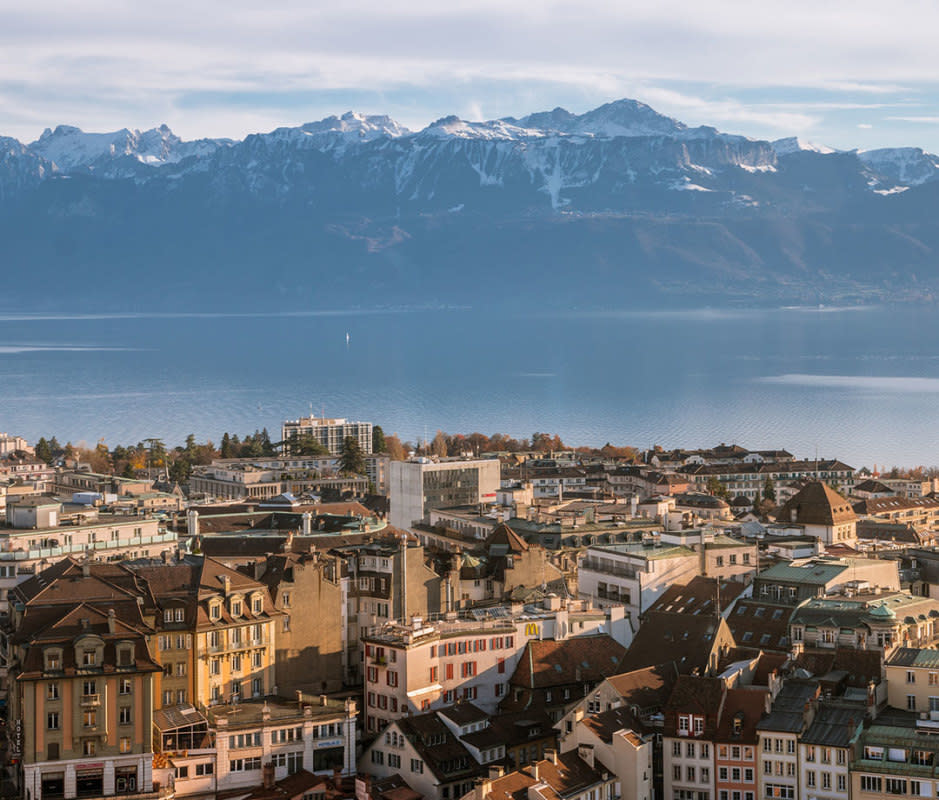
Pintai Suchachaisri/Getty Images
A Swiss city so suave that David Bowie once owned a chateau in the area and reportedly wrote “Let’s Dance” there, Lausanne exudes culture and coolness at every turn. Swing by the Plateforme 10, housed in an old train depot, to explore the city's newly established arts district, featuring works from Cantonal Museum of Fine Arts and Photography, and the Museum of Contemporary Design and Applied Arts. Thanks to the International Olympic Committee, which moved its headquarters here from Paris in 1915, Lausanne is home to arguably the most comprehensive Olympic Museum in the world. If your pace is more amble than gold medal sprint, you can still get your steps in by walking from downtown into the city center's neighboring woods—where a short hiking path leads to Sauvabelin Tower, a medieval wooden structure offering panoramic views. Lausanne's outstanding dining options include Michelin-starred Restaurant de l’Hotel de Ville Crissier, Le Berceau des Sens, and Auberge de l'Abbaye de Montheron.
Where to Stay: Royal Savoy
Palatial accommodations await at the Royal Savoy Hotel & Spa Lausanne, a 5-star, Art Nouveau property overlooking Lake Geneva. Amenities run the gamut here from the hotel's Spa du Royal and rooftop terrace to a renowned on-site Brasserie and access to the nearby Lausanne Golf Club.
Malmö, Sweden
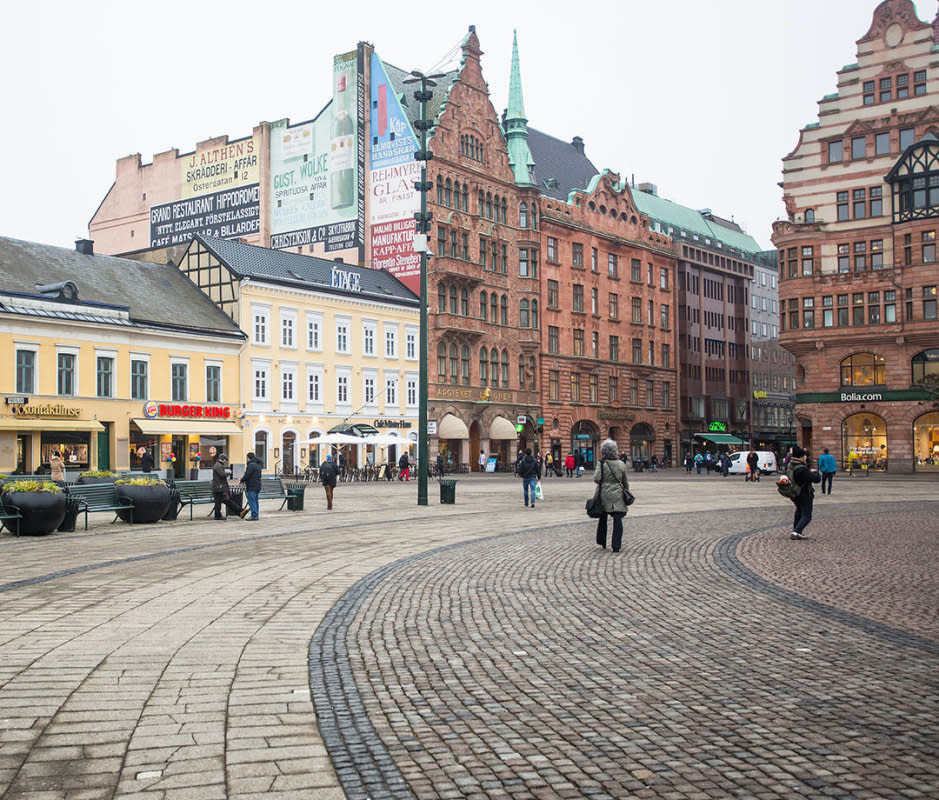
Matthew Micah Wright/Getty Images
Only three hours from Gothenburg, and 50 minutes from Copenhagen, Malmö is the perfect add-on to a Scandinavian trek. Sweden’s third largest city has a standout character all its own, most immediately noticed by its iconic Turning Torso skyscraper. The 623-foot, neo-futuristic edifice dominating the town's skyline and resembling a twisting spine was until recently the tallest Nordic building, inspiring its own entire style of architecture.
In Malmö, visitors can take a bracing dip in the sea—or at least stroll alongside it through the charming neighborhood of Västra Hamnen, with a stop at Ribersborgs Beach—featuring two ocean-water pools that remain open in the winter for ice bathing. For a delicious lunch, grab a post-dip bite at Malmö Saluhall, a lively indoor food market, before getting your afternoon cultural fix at Malmö's numerous museums. Whether your interest is disgusting food (there's a museum for it) or contemporary art at Malmö Konsthall, the seriously unique museum experiences here will lure every curious traveler. Keep an eye on the schedule at Eleda Stadion, a premiere place to catch a soccer game.
Where to Stay: The Duxiana
The Duxiana is an extension of the Swedish furniture company of the same name—so you know you’re in for an epic hotel bed experience. A light, airy design and central location make it hard to beat. IKEA, are you listening?
Related: 14 Best European Coastal Towns and Cities to Beat the Crowds
Tórshavn, Faroe Islands
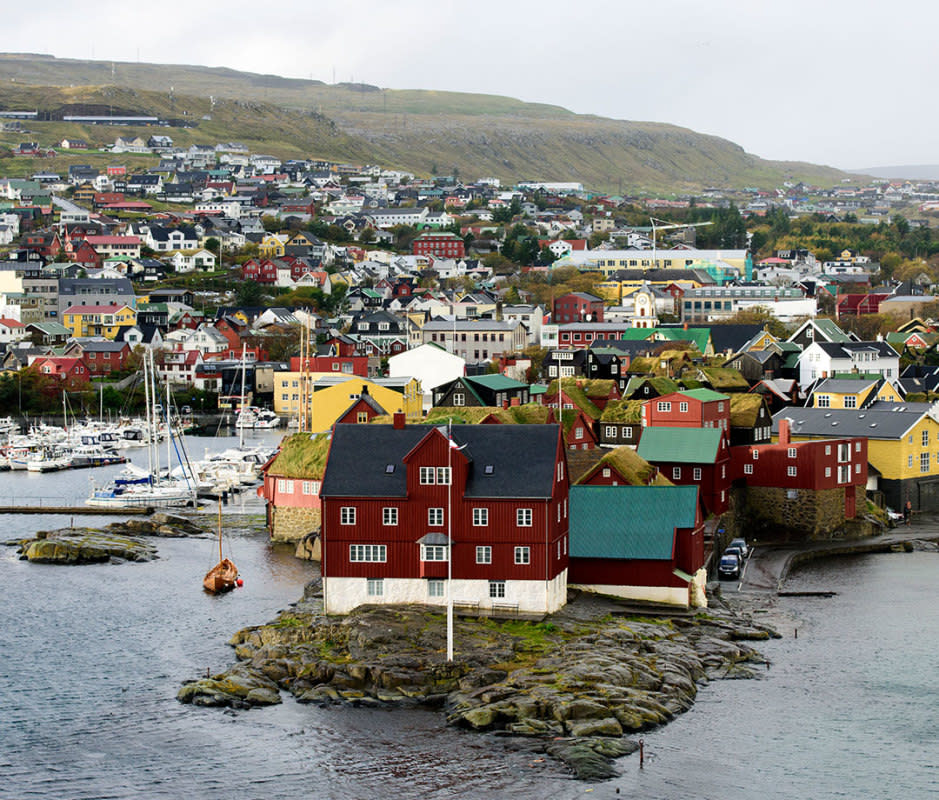
Feifei Cui Paoluzzo/Getty Images
Most locations in the Faroe Islands could be considered underrated. Located in the triangle between Iceland, Scotland, and Norway, the cluster of 18 islands is still an emerging tourism spot—one blessed with stunning waterfalls, rugged coastlines, and more sheep than people. Consider its capital city Tórshavn your gateway to the rest of the nation. With roughly 17,000 residents here, the compact city itself is a quick visit.
Stroll the old town harbor to spot some classic Nordic architecture painted in Wes Anderson-worthy hues, and grab a coffee at the cozy Café Panamé. Go record diving at Tutl on High Street to learn about the Faroese music scene—or, better yet, visit in July when nearby G! Fest features some of the country’s most notable acts. For a classic Faroese coast-to-coast hike, start at the crossroads of Landavegur and Velbastaðvegur and tromp along an old, hilly trail to the charming village of Kirkjubøur. Inspired to go even further afield? Load your rental car onto the ferry towards Sandoy for a road trip around the tiny, non-touristy island, rich with surreal views—and, yes, countless sheep.
Where to Stay: Hilton Garden Inn
The Hilton Garden Inn is located just outside the city, and a convenient five minutes from Svartifoss Waterfall. This might just be the world's only Hilton property with a traditional grass roof, making for incredibly cool photos.
Tallinn, Estonia
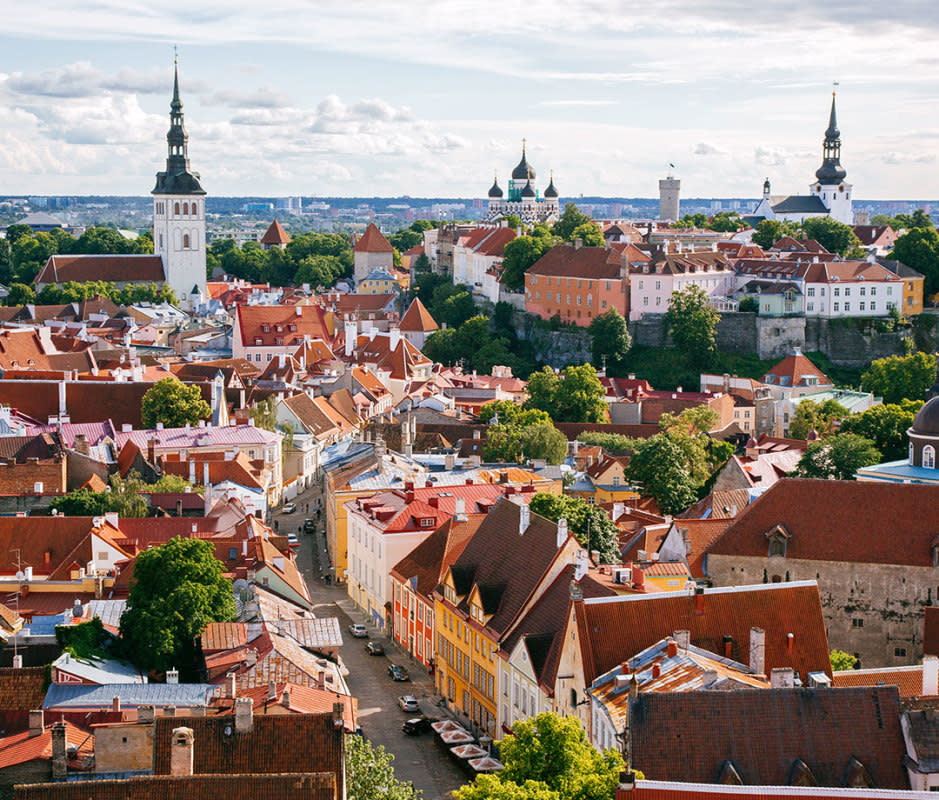
Alexander-Spatari/Getty Images
Tallinn has done a lot to raise its international profile in recent years. Among the crown jewels of the country’s international offerings is Tallinn Music Week, an event that celebrates not only music, but food, art, fashion, and social justice. Estonia's picturesque capital is a study in contrasts—one of the few places in Europe that can boast an old town left intact by World War II while also providing a path for would-be creators everywhere to become e-citizens (which has naturally increased the number of startups in the city).
Who wouldn't want to actually visit this town? There isn’t another place in the world where you can get a detailed look at communism through a KGB Museum and then discuss what you learned over drinks at a Depeche Mode-themed bar. If you’re looking for a souvenir, wander over to Telliskivi, a creative hub that's home to music concerts, bi-weekly flea markets, vintage boutiques, and cafes.
Where to Stay: Hotel Telegraaf
Located in the center of Old Town, Hotel Telegraaf has both location and history on its side. The 19th-century art deco building was once home to the Estonian Telegraph and pays tribute to that history with sleek, minimalist suites named after the likes of William Morse, Alexander Graham Bell, and Werner von Siemens.
Dijon, France
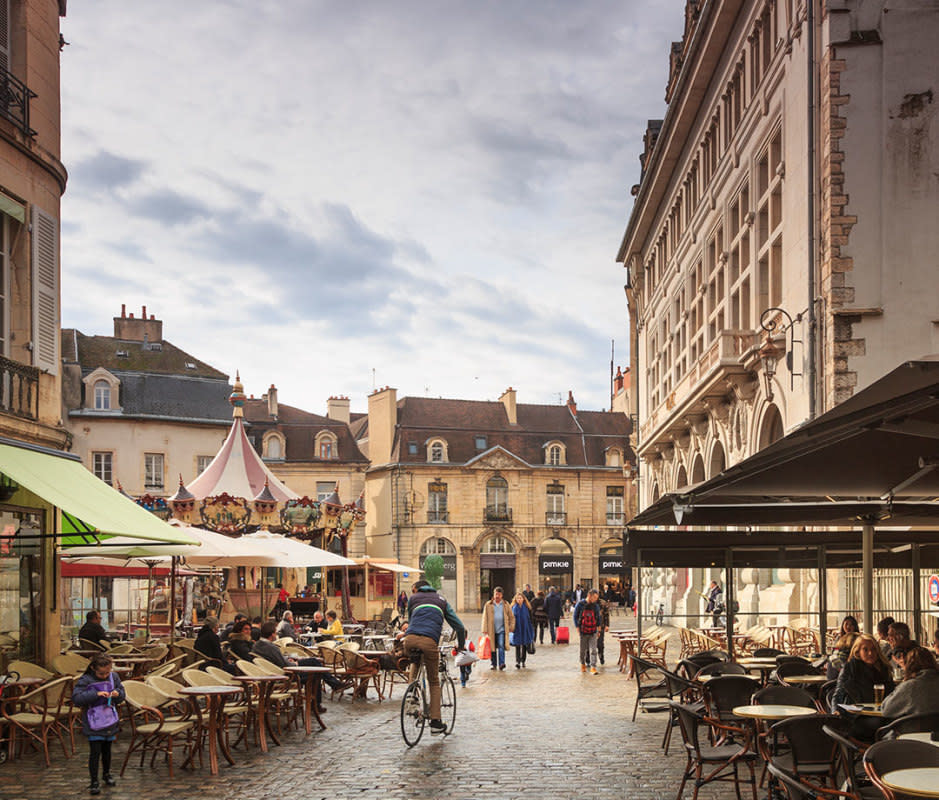
Jon Lovette/Getty Images
If you can get past the condiment connotation, the Burgundian capital and historical French hub offers a wealth of cultural and culinary attractions with names that will ring a bell from more spotlight-hogging cities in France—including Notre Dame, Musee des Beaux-Arts, and Les Halles. Visiting Dijon puts you in the heart of one of the world's most famous wine regions. Translation: Sampling fine Burgundies here is practically a requirement. Save time for a day trip to a nearby vineyard like Puligny-Montrachet, which offers traditional lunches (with a few glasses of wine). Be sure to stop by L'Héritier-Guyot for only-here souvenirs. In addition to their grapes, the region is known for booze-heavy fruit creams, like Creme de Cassis.
Where to Stay: Hôtel des Ducs
Cuddle up at the Hôtel des Ducs, a brightly designed, budget-friendly option in the medieval city center that will save you a few extra euros for that case of wine you know you’ll be shipping home.

